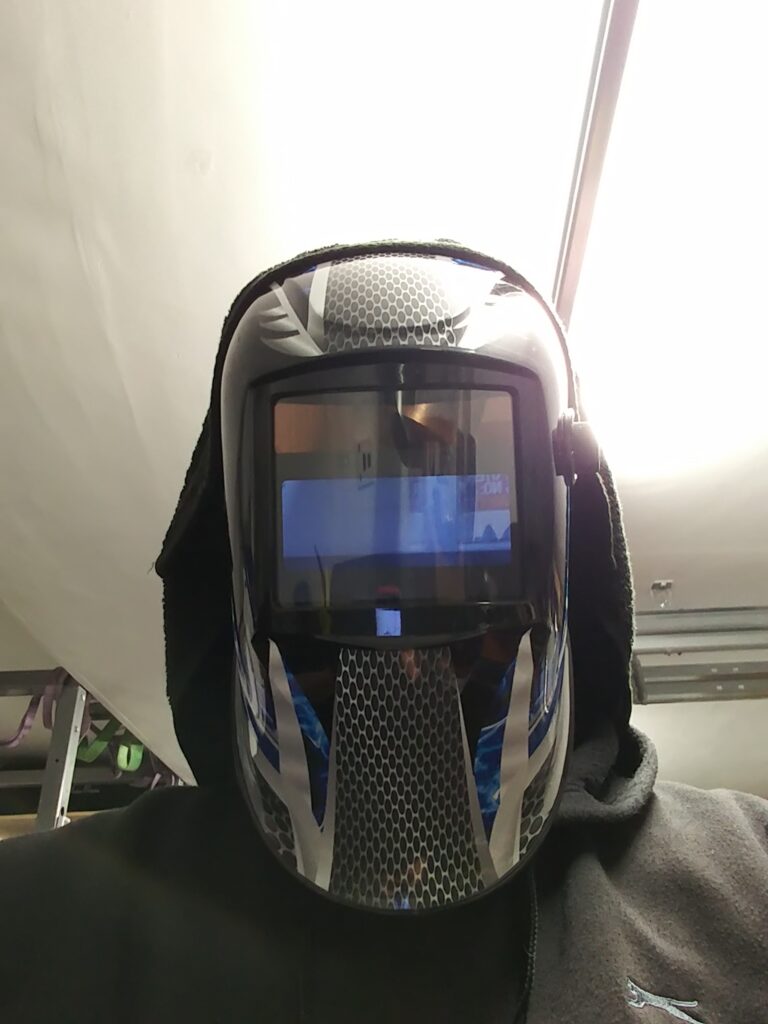Welding Helmet Back Hood (10/2019)
The one thing I didn’t consider when I was deciding where to locate my welding table within my garage was lighting – being relatively new to welding it’s not an issue I had ever come across before. After I sat down to start welding I was met with very annoying reflections in the inner lens of the helmet, which were predominantly caused by the strip light directly behind and above me. Sometimes I could avoid it but often the glare was very intrusive, and it affected my visibility out of the helmet during a weld.
I looked online for solutions, and found that this was a common problem and you could buy hoods which go over the back of the helmet to block the light. I considered how I might fasten such a hood to the helmet – I could use velcro, but I’m no good at sewing and I’m sceptical of the long-term reliability of iron-on velcro. What about snap fasteners? They’re very easy to fit and very reliable. I wasn’t too bothered about drilling the helmet to fit the studs- it was £30 from Amazon. What could I use for the hood material? It should be 100% cotton – in the event that it did somehow set on fire I didn’t want it to melt onto the back of my head, which might happen if it were made out of nylon or polyester…
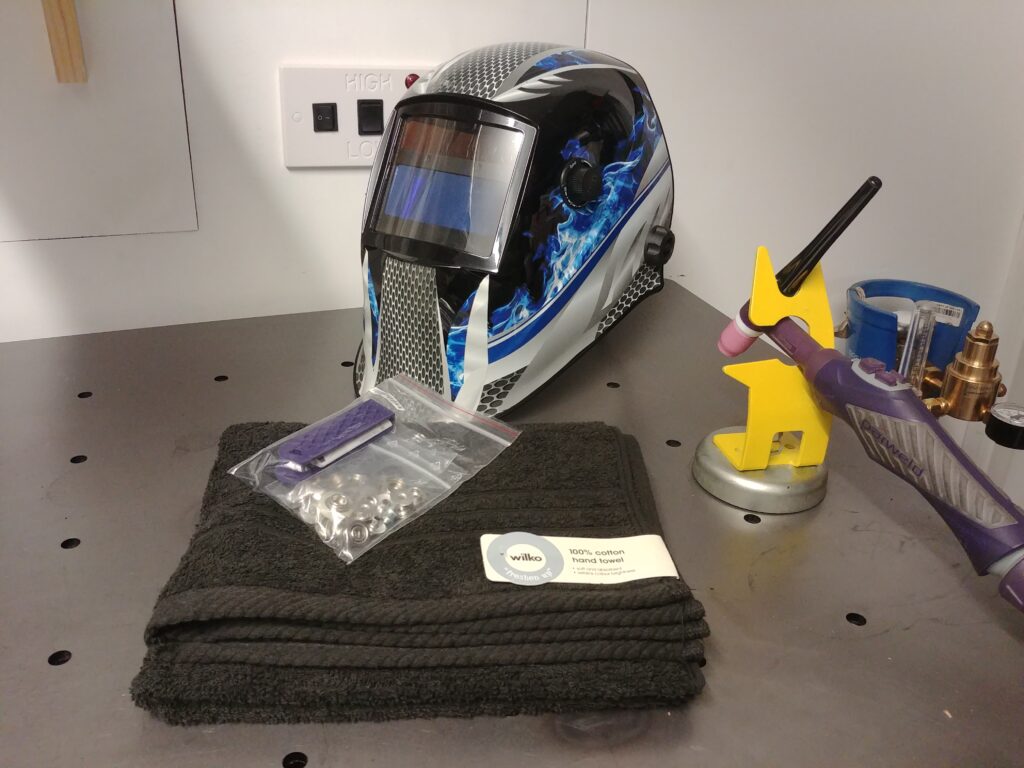
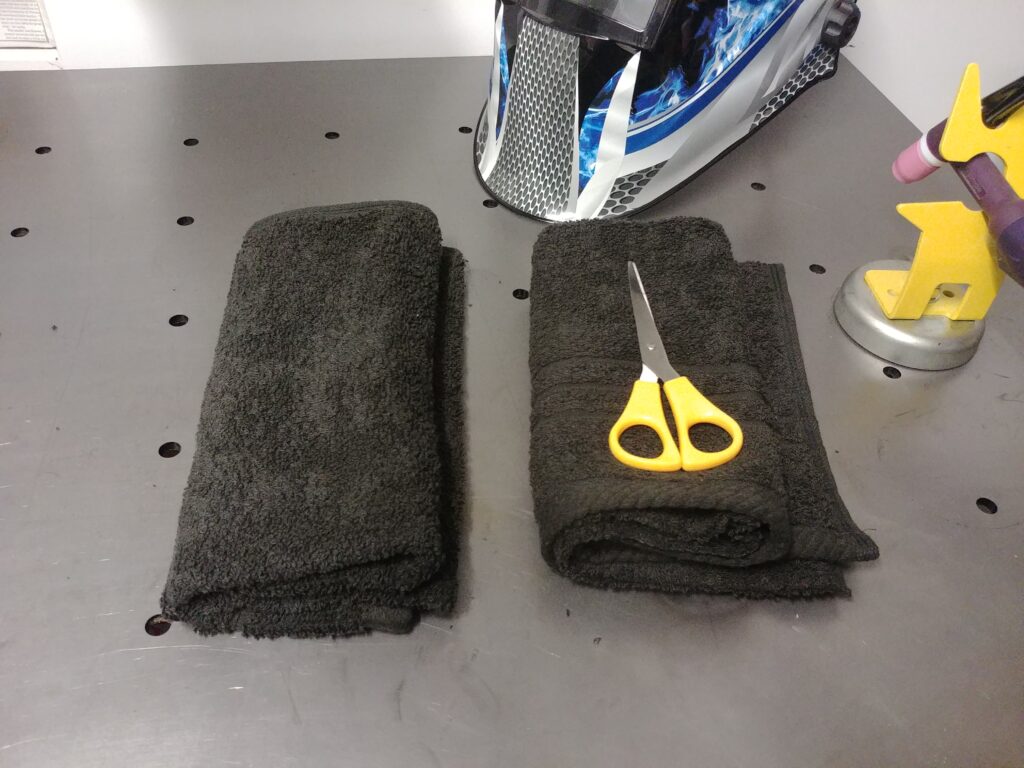
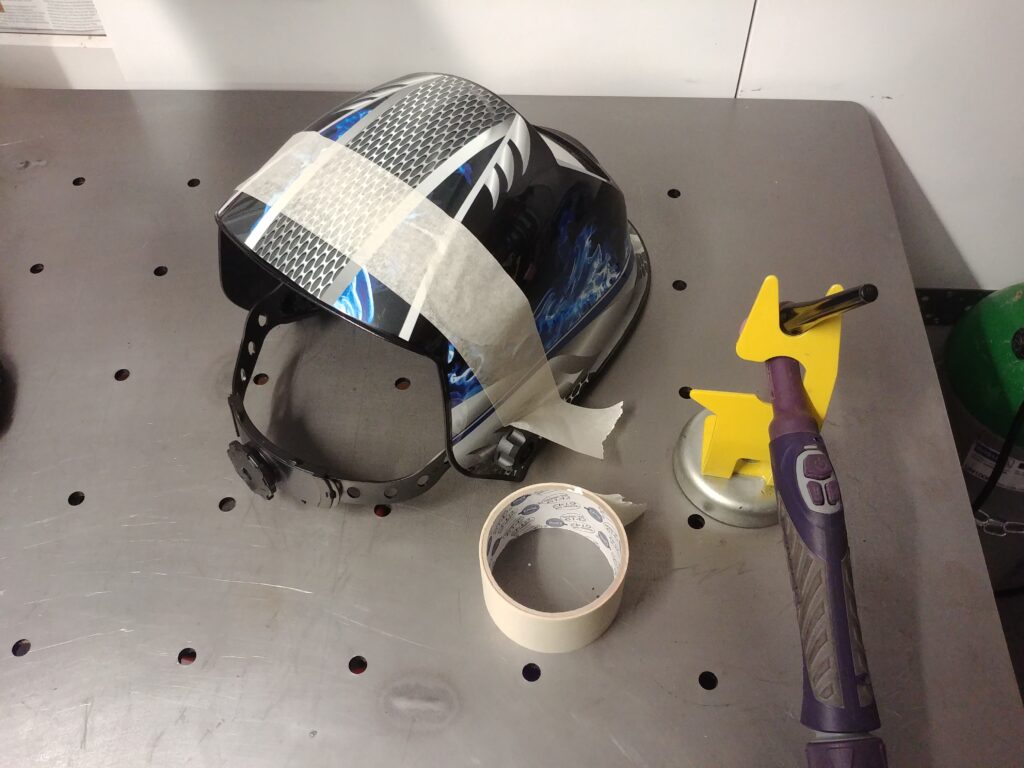
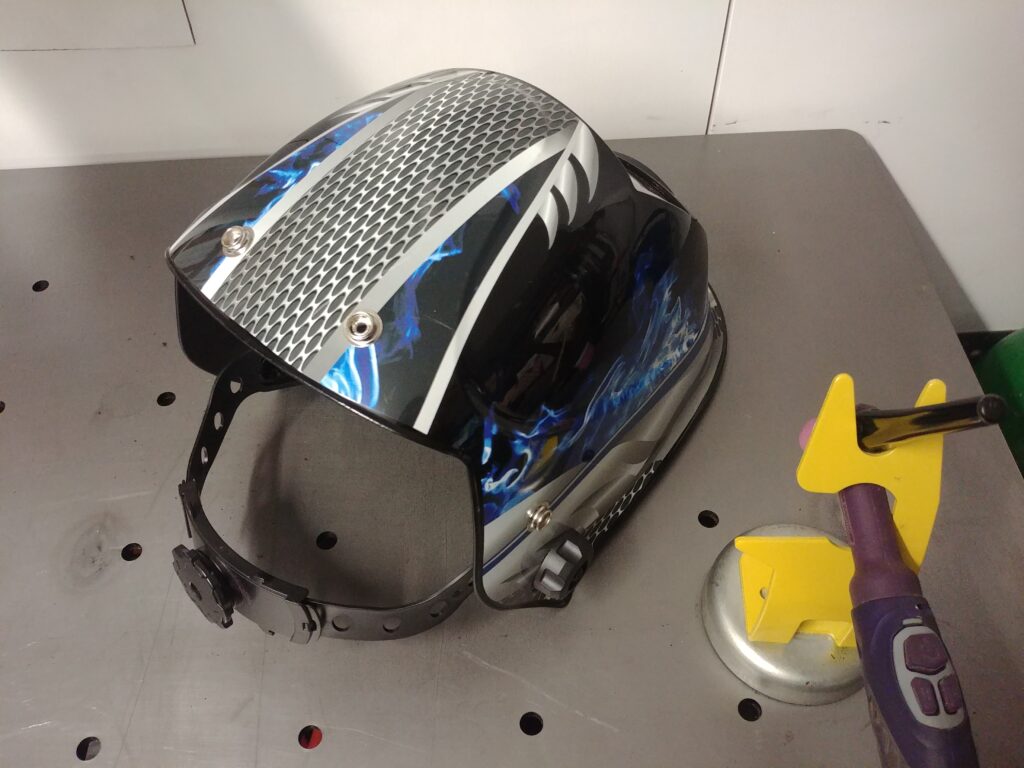
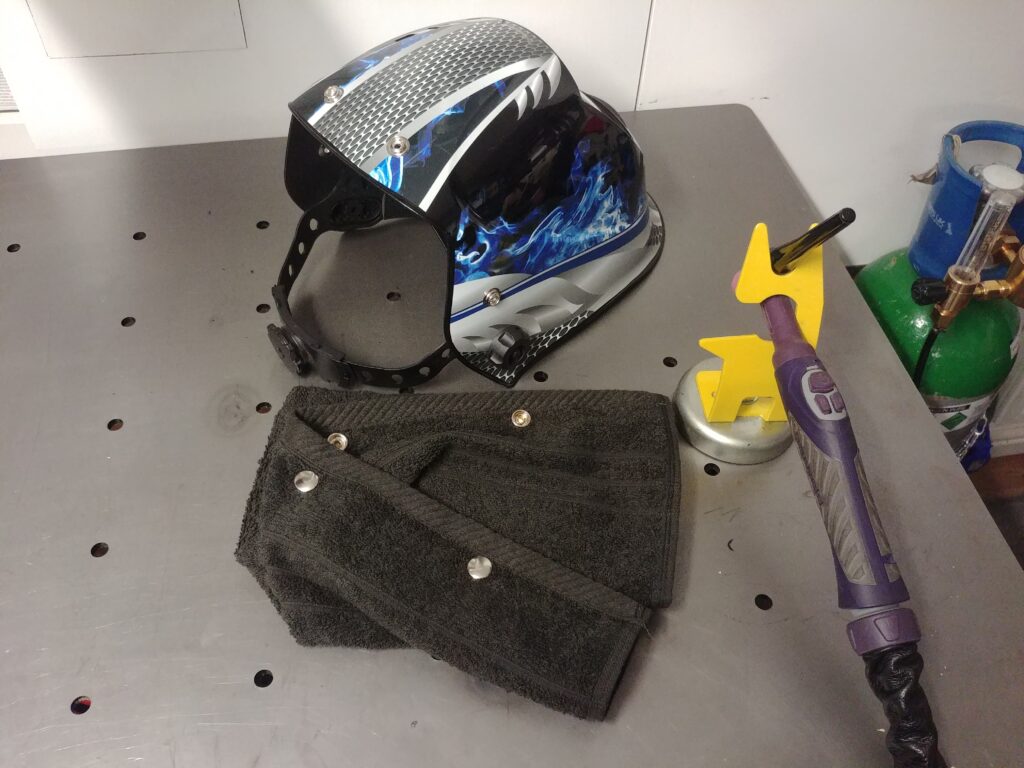
I first figured out how I was going to cut the towel. As it turned out, the towel width was the exact dimension I needed to wrap around the helmet, so I simply cut it in half lengthways. I applied some masking tape to the helmet and then measured, marked and drilled the holes for the four studs. Using the supplied tool with a hammer, I hammered the eyelets to the studs on the helmet. I made four corresponding holes in the towel using scissors and then hammered the caps to the sockets.

This was a simple but effective solution that completely eliminated my glare issue. The hood is removable so I can take it off when I don’t need it or if I need to wash it. With all four snaps connected I’m a bit restricted when tilting the helmet, but when using only the two snaps on top it works perfectly to block the light from behind while allowing me full tilt range if I want. After extended periods it can get a bit warm under there- not a problem in the winter but as it gets to the warmer months I might consider making another out of a lightweight cotton fabric.
